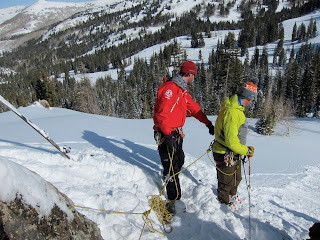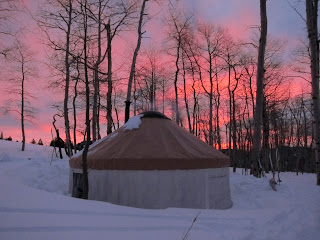It's been said before. In every avalanche education class I've ever attended, the sober warning goes something like this: simply by virtue of attending this course, at some point in the future, someone you know, a friend, a colleague, a ski partner, will die in an avalanche. Well, it's happened. But I can't say it happened to me. It happened to Nathanael Soules, a longtime Telluride local, husband, father, snowboarder, skateboarder, hockey player, real estate professional, TellSki manager, my friend and former co-worker. Nate died Monday in an avalanche while snowboarding in the sidecountry terrain of Bear Creek, just outside the Telluride resort boundary. He was 38. He was in a natural slide path known as Contention, when a large slab fractured above him and carried him 900' to his death. It is an area well known to me; it happens to be one of my favorite couloirs in North America, but it will never hold the same ephemeral meaning for me again. A narrow, steep, and jagged slice of geologic heaven that once delivered regular doses of backcountry bliss will now be permanently scarred by the thought of today's tragic news. I've ridden that couloir many times, always alone, too eager and too selfish to share its location with others, even my friends. Apparently Nate had similar notions, as he too was riding alone, albeit on a day with significant avy danger. I didn't know Nate very long or very well, but I knew him as a kind, intelligent, and thoughtful man, one whom I thought would make a good friend if I could ever make the move to Telluride permanent. I will never know that possibility. Once, after working an event together, I asked Nate to join me on a dangerous route I had planned for the afternoon outside of the resort. He declined, saying "I don't ride big lines like that anymore," and explained that once you have a wife and kid, your risk tolerance changes. At the time, I thought I understood, and I envied his self control. I know now that family is not the only thing that can change your perspective.
Avalanche Kills Sidecountry Snowboarder in Contention
Snowboarder Dies in Telluride While Wearing ABS and Avalung
http://www.telluridenews.com/articles/2012/02/15/news/doc4f3b0d5e0f75b597985379.txt





























